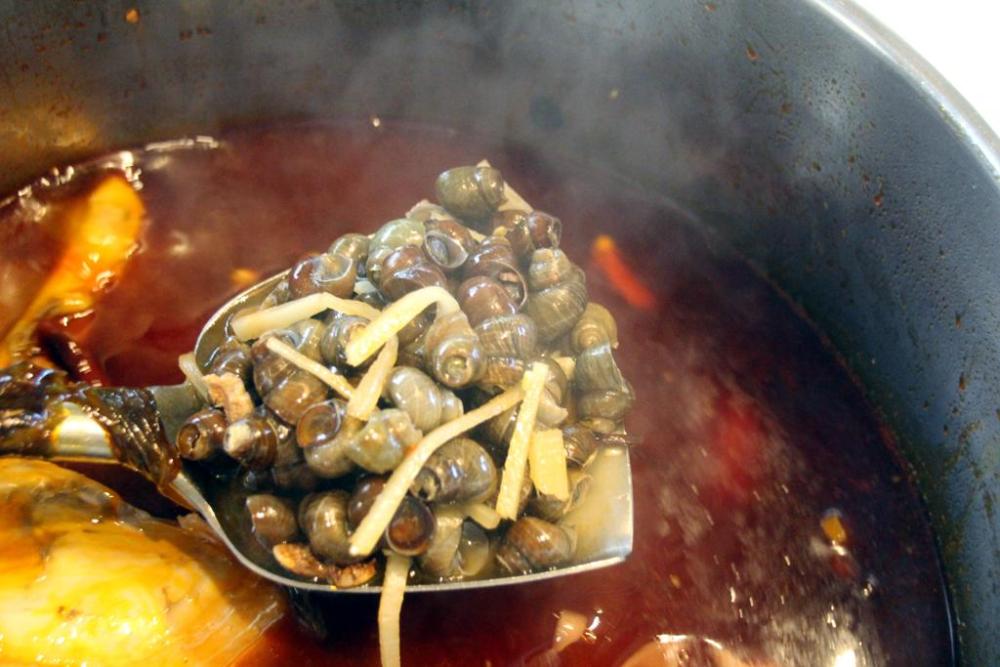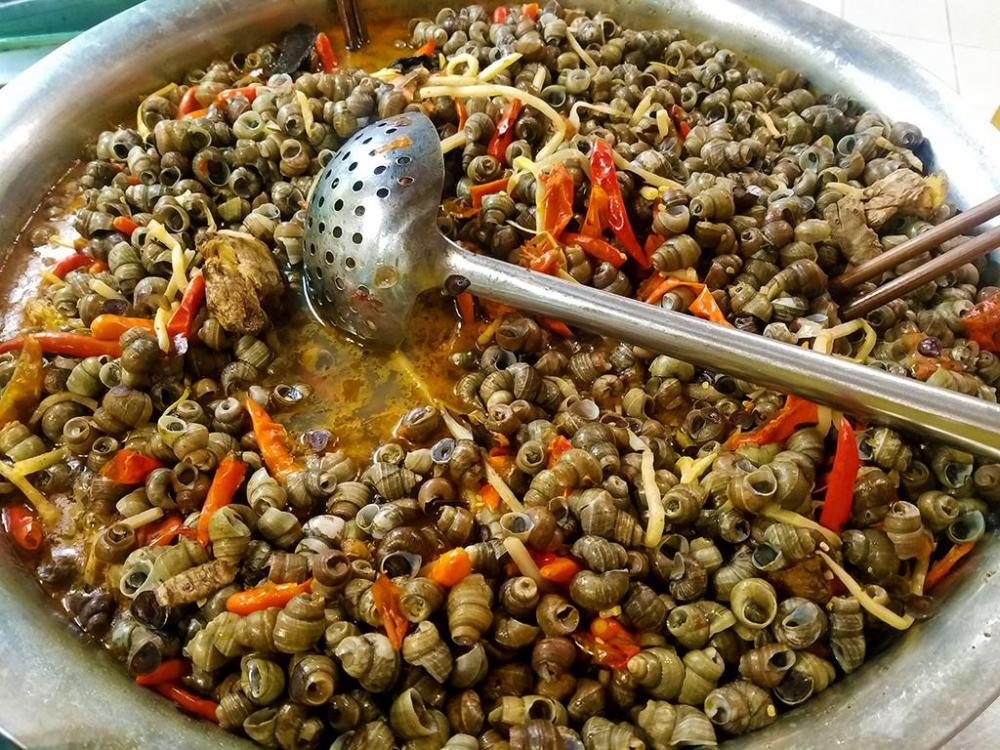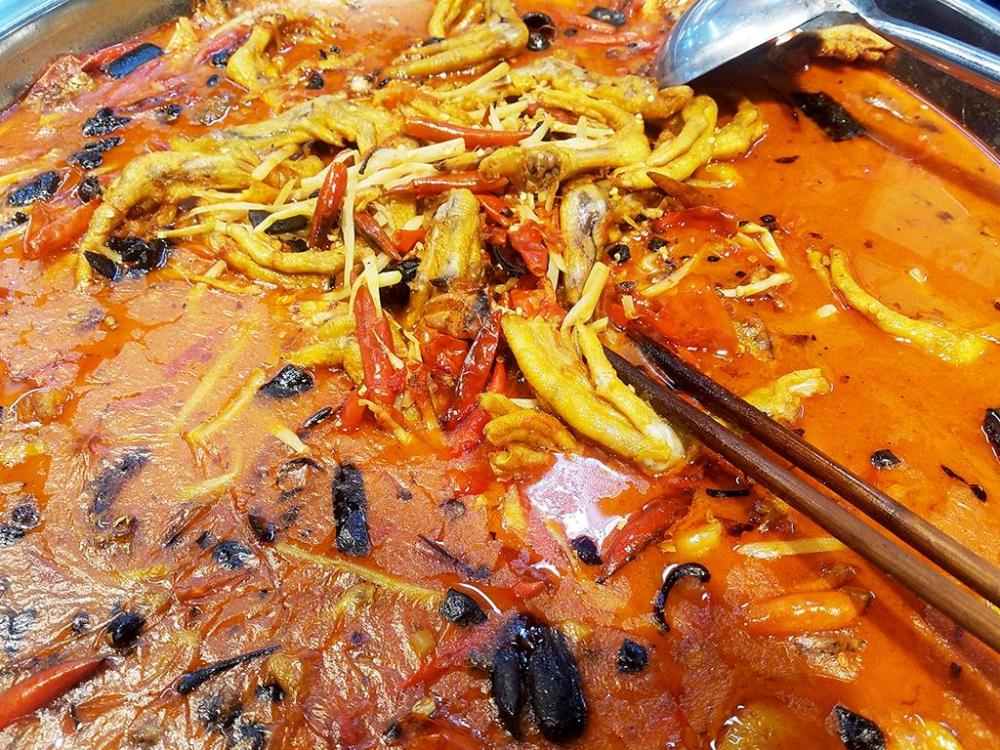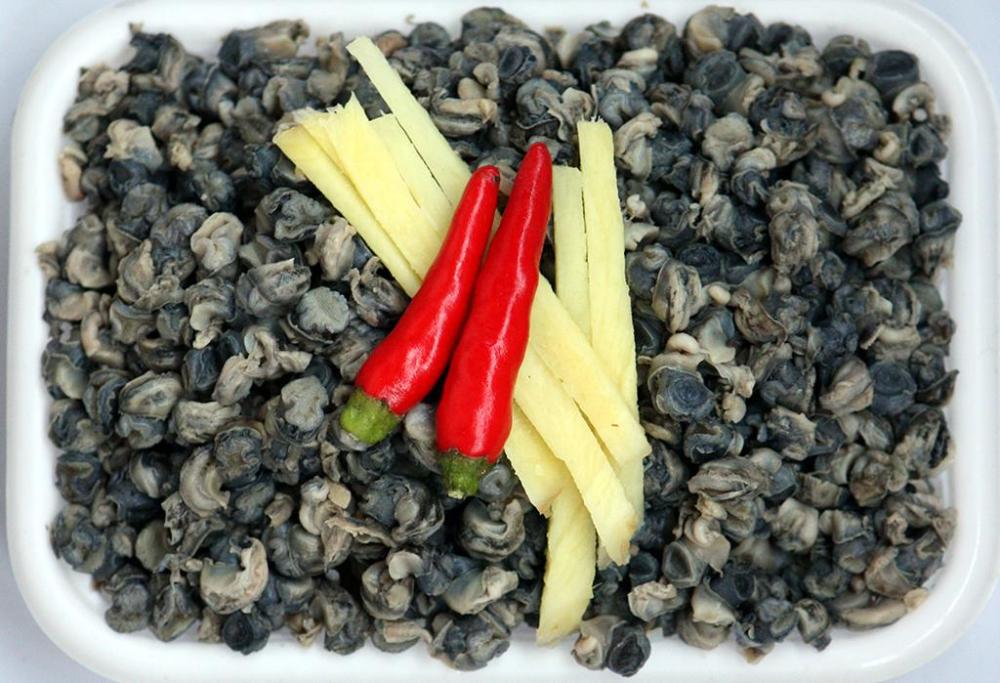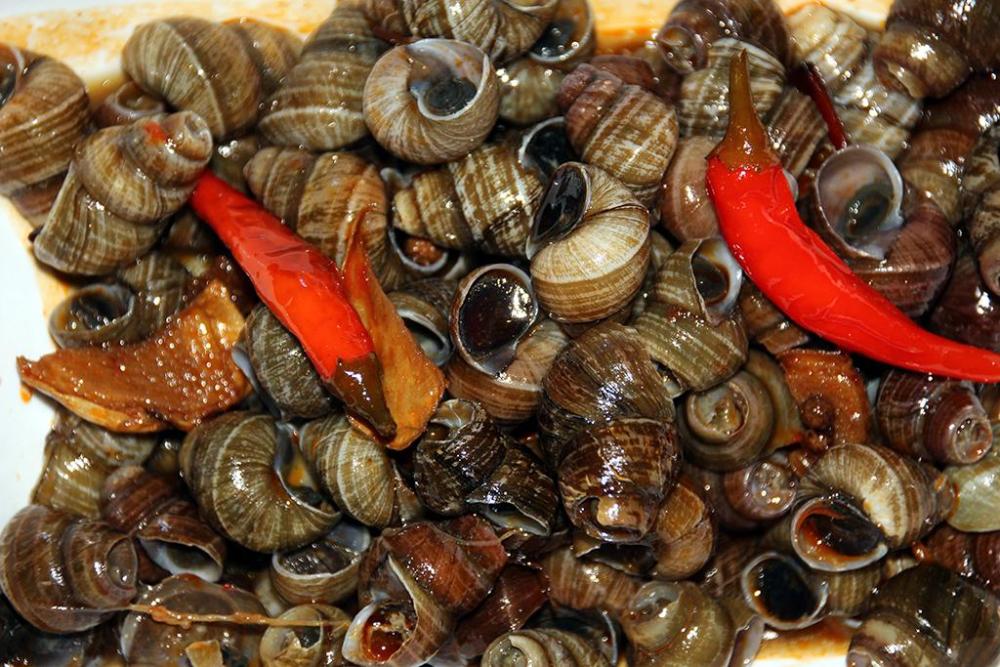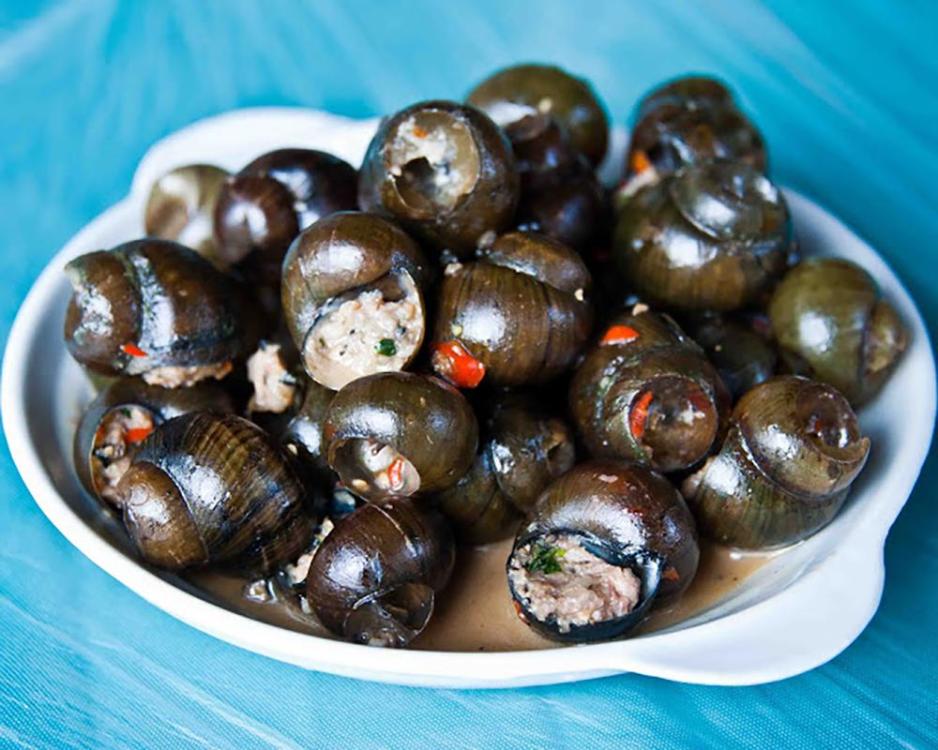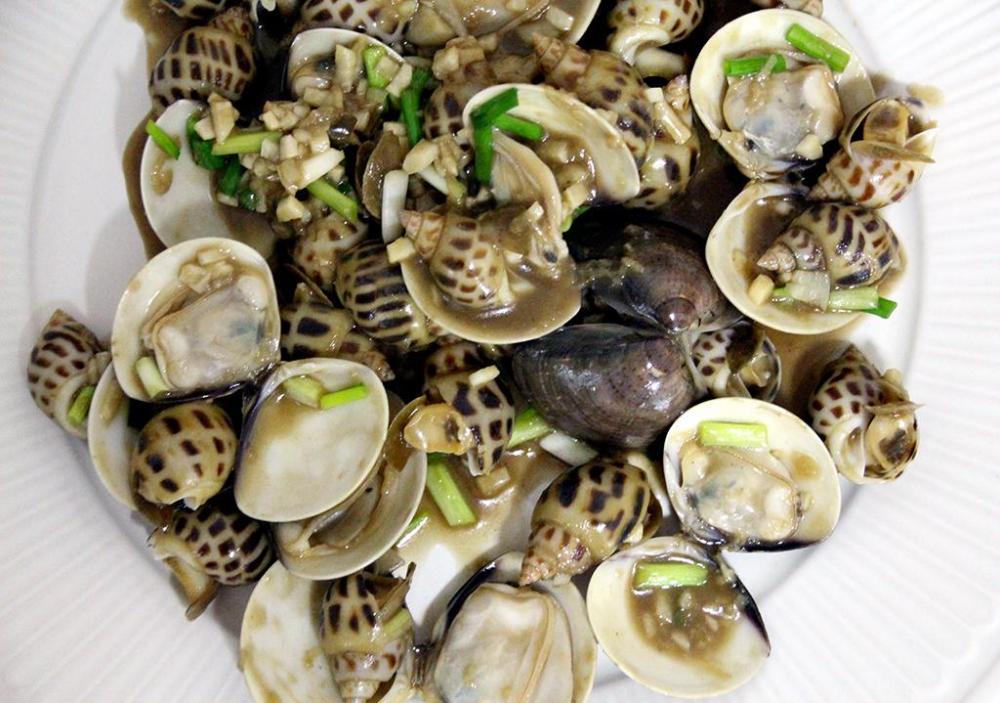16. 螺蛳 (luó sī),田螺 (tián luó), 海螺 (hǎi luó)
According to research reported in this 2003 article from China Daily, pottery was invented in Guangxi between 7,000 and 12,000 years ago for the express purpose of cooking today’s favourite ingredient, the snail. More recent discoveries have pushed that date for pottery back even further to an incredible 20,000 to 26,000 years ago. At least, that is the date for pottery. I have seen nothing to confirm or totally refute the connection with snail eating.
But we do know that neolithic man consumed freshwater snails in large quantities. After all, snails don’t run away or bite back like other prey. The neoliths also left the shells behind in dumps we know they used. The earliest known human remains in east Asia are those of 柳江人 (liǔ jiāng rén) ‘Liujiang Man’, discovered in Liujiang, Liuzhou in 1958. and believed to be about 68,000 years old. He lived in some of the karst caves south of Liuzhou city and snail shell dumps have also been found in the region.
Liujiang Man
Whatever the truth, and it is disputed, the locals haven't abandoned their snail eating. Tons of them are consumed one way or another every day, most often in the form of 螺蛳粉 (luó sī fěn), Liuzhou’s now famous river snail noodle dish, but I’ve written about that above so I will say little today on that subject. That is not to misrepresent luosifen’s economic and gastronomic importance to the city, but to show there’s more to snails than just that. One thing is sure; snails were eaten for millennia before anyone thought to turn them into soup for noodles.
Preparing Snail Broth for Luosifen
Of course, many cultures eat snails, but I have never seen so many in markets or supermarkets anywhere else. Huge steaming pots of them, red with chillies and full of gastropods are set out to tempt you. These are 螺蛳 (luó sī), literally spiral shell snails, the famous river snails, a type of Viviparidae, although no one seems to know the exact species. They are found in huge quantities in the Liujiang, the river that runs through the city as well as in the local rice paddies and ponds. They are usually eaten as a snack or as beer food with the diner using a toothpick to extract the tiny, but delicious, morsel within. Always, it seems, sold with compulsory chillies.
Often they are enhanced by including ducks’ feet or chickens’ feet, euphemistically known as 凤爪 (fèng zhǎo) or ‘phoenix claws’, more the locals like to gnaw on.
Snails with Phoenix Claws (Chicken's Feet)
Snail meat is also extracted raw from the shell and sold to be added to soups, hotpots etc. I like that they include some chilli and ginger in case you forget.
Raw snail meat
Cooked snails
These snails are sometimes called 田螺 (tián luó), literally 'field snail' but it's a useless descriptor as it is also applied to many other species large and small, including Cipangopaludina chinensis Gray, aka the Chinese apple snail or Chinese mystery snail, an invasive species causing havoc across the USA and Canada. While it can be delicious, it is also highly prone to hosting parasites including the human intestinal fluke Echinostoma cinetorchis.
Larger snails of other species are sometimes served stuffed with pork and baked but are nowhere near as popular as the little spirals.
River Snails with Pork
Sea snails are shipped in from southern Guangxi and often served with other seafood such as clams
Sea Snails with Clams
Snails being cooked in one of Liuzhou's less salubrious restaurants




